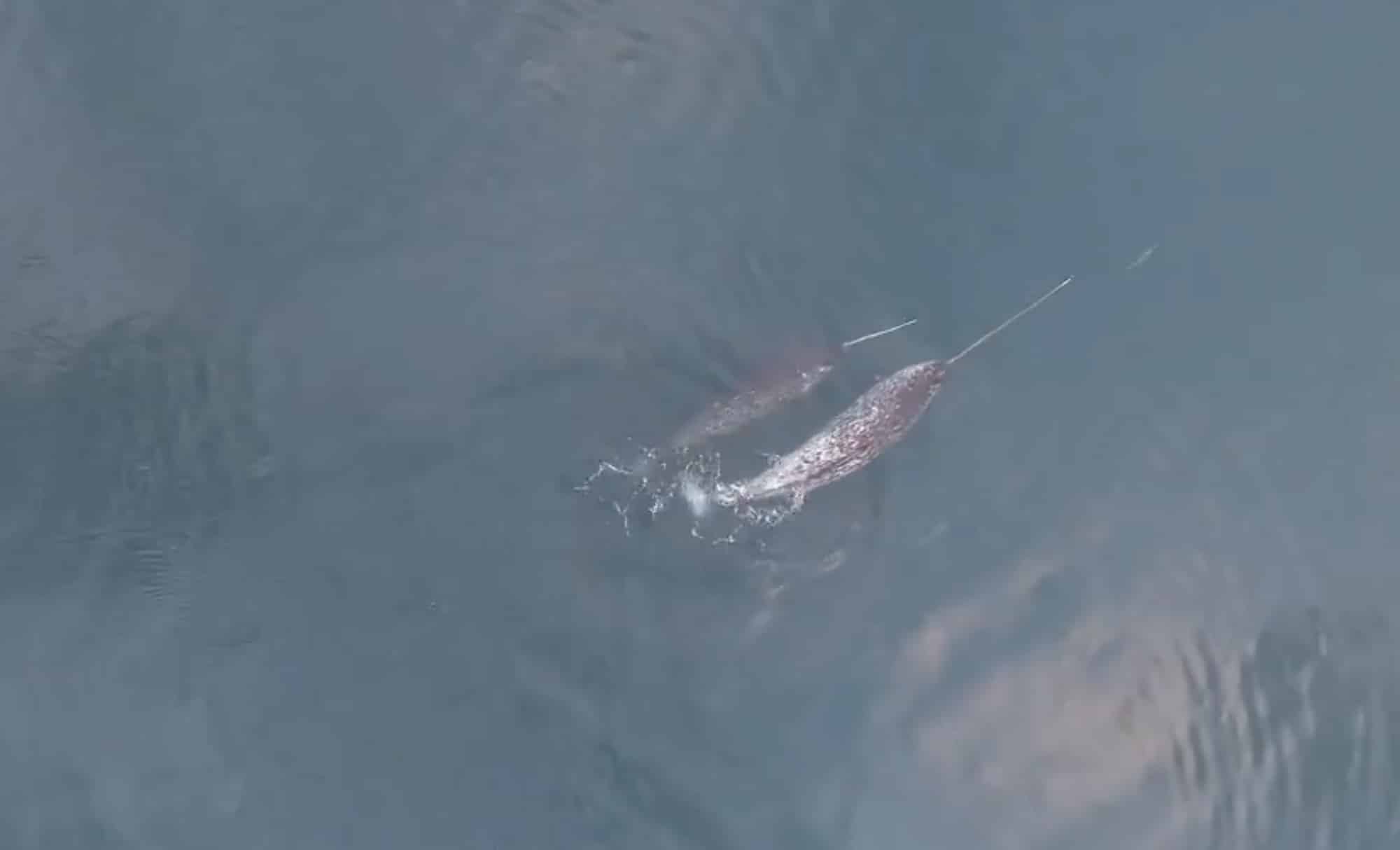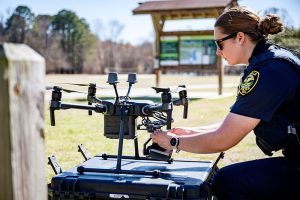Drone Footage Reveals Narwhals’ Unexpected Tusk Play in the Arctic
Researchers have utilized drones to capture groundbreaking footage showcasing narwhals engaging with their distinctive tusks in unexpected ways. This research, published in February 2025 in Frontiers in Marine Science and reported by The New York Times, details how these whales not only chase Arctic char but also exhibit behavior that resembles play—all recorded above Canada’s High Arctic.
Drones Uncover Narwhal Interactions
The study, conducted in Creswell Bay, Nunavut, in August 2022 and led by Greg O’Corry-Crowe from Florida Atlantic University, deployed a DJI Phantom 4 Pro+ V2.0 drone at an altitude of 65 feet (20 meters) or higher to monitor narwhals in cryptic shallow waters during continual daylight. With support from local Inuit communities, researchers focused on this well-known summer habitat, leading to some of the clearest narwhal footage to date.
Narwhals, characterized by their tusks measuring up to 10 feet (3 meters), present challenges for traditional study methods due to their shy nature. Kristin Laidre from the University of Washington stated, “They’re extremely shy and elusive.” However, the use of drones represents a significant non-invasive approach—essential for wildlife monitoring.
Narwhals use their tusks to chase and bat around fish, marking the first documented case of narwhal play.
Tusk Techniques: From Hunting to Play
The footage demonstrated diverse tusk utilizations. One scene showed narwhals pursuing an Arctic char, gently nudging it with tusk tips while deliberately keeping it just ahead. Cortney Watt from Fisheries and Oceans Canada remarked, “We were reluctant to label it ‘play,’ but that’s genuinely what it appeared to be.” Another sequence displayed narwhals striking fish with swift, powerful tusk jabs—a total of five impacts, twice with the tip and thrice with the shaft to stun prey before consuming it.
The study’s ethogram catalogued 17 unique behaviors, ranging from protracted pursuits lasting over 5 seconds to rapid taps under 5 seconds. In one striking instance, a narwhal struck a char 12 times with deft precision, flipping it without fatal intent. Social interactions also emerged; older narwhals were seen guiding younger ones, indicating intricate social dynamics.
Gulls Introduce Intrigue to the Chase
Glaucous gulls added an unexpected complication, diving in an attempt to steal fish from the narwhals, representing the first known instance of kleptoparasitism involving this species. In one notable moment, a gull interrupted a hunt, allowing the char to escape, while successful narwhal captures frequently happened below the surface, out of gulls’ reach—indicating an adaptive hunting strategy.
The Role of Drone Technology in Discovery
The DJI Phantom 4 Pro+ V2.0, though an older model, provided high-resolution footage over 20-minute flights, adeptly tracking narwhals’ rapid maneuvers—including turns of up to 360 degrees in less than 3 seconds—facilitated by lateral body rolls. This builds on previous UAV research, such as a 2016 video of narwhals stunning Arctic cod, and enhances our understanding of their prey preferences, now including Arctic char. The drone is priced at approximately $1,500 USD as of 2022, a cost-effective tool for such studies.
Market and Regulatory Implications
This research highlights the growing significance of drones in marine studies, amidst an industry expected to reach $42 billion by 2025, according to Statista. Arctic-adapted UAVs will require improved battery life and robustness—areas ripe for innovation. In Canada, Transport Canada requires permits for drones over 0.55 pounds (250 grams) near wildlife, which this study observed (Permit A-22/23-002-NU). Simplifying Arctic regulations could foster enhanced efforts in future research endeavors.
Infrastructure and Future Prospects
Logistical support for Arctic fieldwork often relies on programs like Canada’s Polar Continental Shelf Program, with expenses likely exceeding $50,000 USD—support facilitated by National Geographic and others. Establishing permanent bases could lower costs, despite the daunting challenges posed by severe conditions. O’Corry-Crowe envisions further UAV studies to explore climate-driven shifts in prey dynamics, potentially integrating drones with underwater technology for deeper insights.
A New Perspective on Narwhal Behavior
This drone-enhanced research presents narwhals’ tusks as multifaceted instruments for hunting, learning, and possibly play while highlighting UAVs’ transformative potential in scientific exploration. As the Arctic landscape continues to evolve, drones will play a pivotal role in observing these changes, integrating advanced technology with conservation efforts.
Photo courtesy of New Scientist
For more information, you can view the original article.













